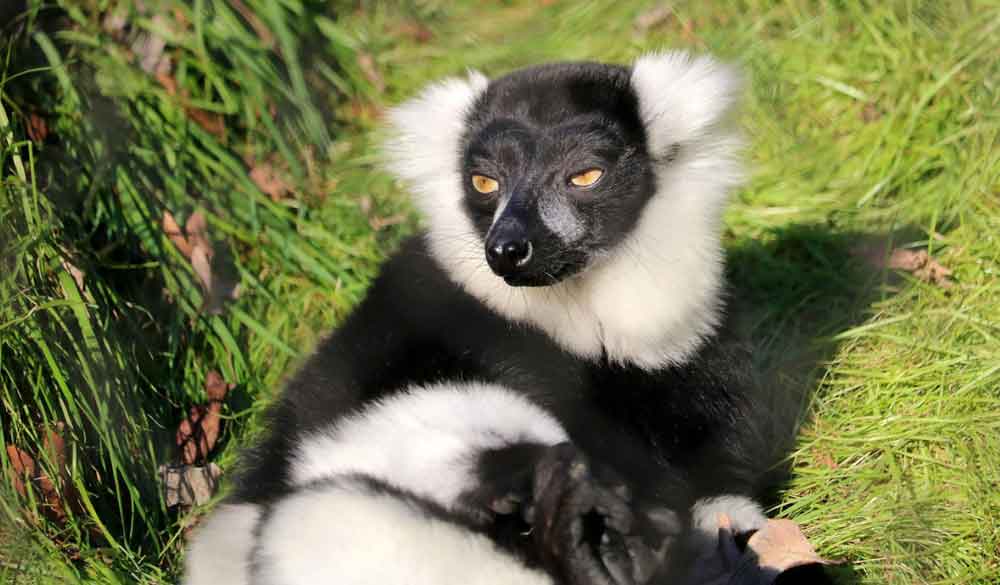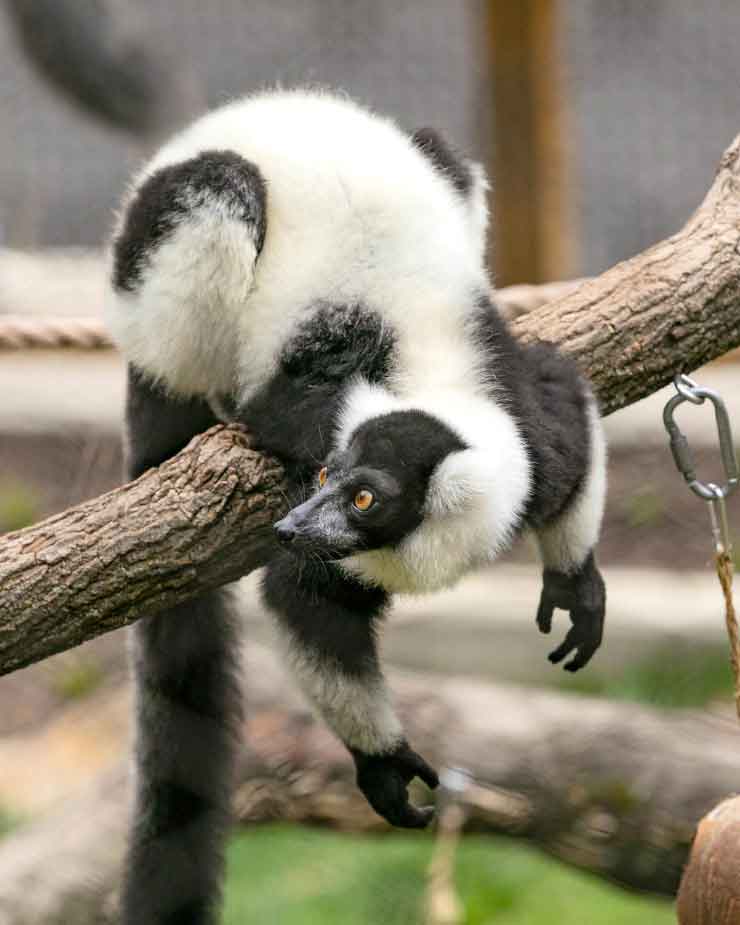Black and White Ruffed Lemur
VARECIA VARIEGATA

HABITAT
Lowland to mid-altitude rain forests
GEOGRAPHIC REGION & RANGE
Only found in Madagascar. This species inhabits the lowland to mid-altitude rain forests in eastern Madagascar.
DIET
Frugivorous- meaning they eat mainly fruit. Also seeds, nectar, and leaves.
PHYSICAL DESCRIPTION
Black and white fur- their hands, feet, tails, faces and heads are typically black. They have bright yellow to yellow-brown eyes.
LIEFESPAN
Natural Habitat: 19 years
Under Human Care: Longer in human care
THREATS
They are threatened by deforestation caused by agriculture, mainly slash-and-burn farming, and from hunting for bushmeat, and the pet trade. Madagascar is an extremely impoverished country with many humanitarian issues which make wildlife conservation a challenge unless these issues are also addressed.
STATUS
Critically Endangered
FUN FACTS
They are the world’s largest pollinators! They eat nectar and the flower’s pollen sticks to their fur, getting transported to the next tree. Palm trees and other hardwoods in Madagascar depend entirely on lemur pollinators!
They are named for the “ruff” of fur that runs around their faces and chins.
They are matriarchal, meaning adult females are dominant over males.
With the exception of the howler monkey, black and white ruffed lemurs have the loudest call of all primates.
What are AZA Zoos doing for Black and White Ruffed Lemurs?
Their zoo population is managed through conservation breeding programs called Species Survival Plan programs, which ensures genetic diversity and species health. There are 170 B&W ruffed lemurs at 46 AZA-accredited facilities. AZA zoos fund and participate in field research focusing on the ecology of lemurs in Madagascar, the health of wild populations, genetics, training local residents in lemur protection strategies, and partnering with conservation organizations.

